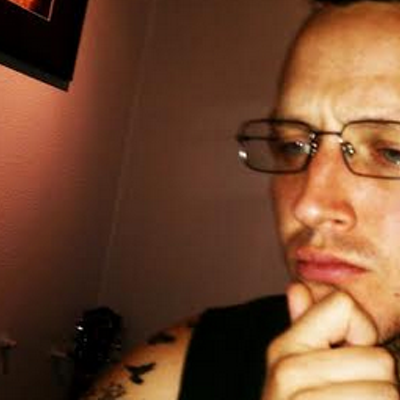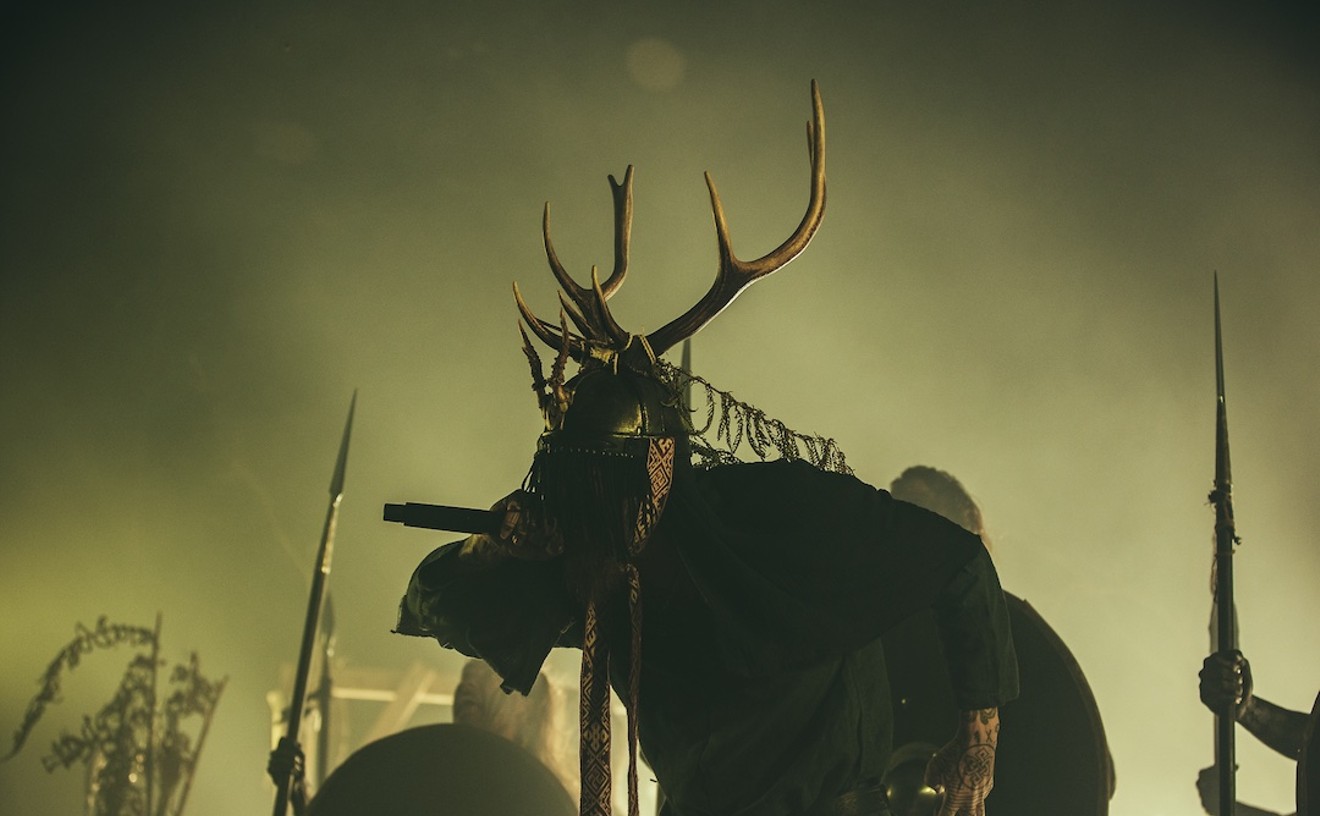In late 2005, a group of musicians moved into a house at 2155 Franklin Street, blocks from Five Points. The neighborhood, once called the Harlem of the West for its thriving jazz scene, had changed a lot by this time, and there were cheap (if neglected) spaces for the young, creative and underemployed. Dubbed the Yellow Bordello after its shoddy yellow paint job, the house became a safe haven for local musicians and members of bands like Planes Mistaken for Stars, Snake Mountain and others, a place where they could live, create, party and do unspeakable things that the then-forgiving neighborhood allowed.
"Rent was $1,800, which was divided up between six or eight people and a band practicing in the basement," former resident Bryce McPherson says. "My rent was usually around $300 a month."
For years, the Bordello existed as a musicians' house — and then, because of some vague illegal activity, the house was seized from the owner in 2008 and everyone was forced to leave. But recently, the Bordello popped back up in music-scene conversations: The property was spotted on Zillow — listed at over $900,000. Its shiny new exterior betrayed not a hint of yellow paint.
The tenants of the Yellow Bordello and other musicians who hung out there certainly have something to say about what the neighborhood looked like eleven years ago. In some ways, the Bordello itself can be viewed as a microcosm of Denver's changing complexion, demographics and cost of living. And with other punk houses and DIY spaces recently shut down by development, it raises the question of whether these spaces can exist in a city intent on growth.
What follows is an unofficial oral history of the Yellow Bordello during a different time in Denver's history, though only ten years removed from today. Told by the musicians who lived and played there, this is the story of an unassuming artist collective, the type that might never appear in this city again.
Bryce McPherson (Big Timber, Pariah Caste, Snake Mountain): I think it was me and Andy Wild (Nathaniel Rateliff and the Night Sweats, A. Tom Collins) and Jen Calloway (Call Sign Cobra, Eyes and Ears) who first found the house. Jen was driving us around during a snowstorm to look at houses for rent. We found the Bordello, and the landlord shows us the house, and there's a steady stream of water pouring out of the living room ceiling — he assures us he's about to fix that. Then we go up to the second floor and there's a stream of water pouring out of the second-floor ceiling as well. There were hypodermic needles next to the front porch and human feces at various points around the outside of the building. This is not to be confused with the raw sewage that backed up into the bathtubs once the landlord turned the water back on.
Arwin, the landlord, was actually the best landlord ever and always fixed stuff and let us pay the rent late, but he got arrested and is now in federal prison.
Mike Neff (El Sinfin, Man Alive): I was part of the first crew to move in along with the McPherson brothers, Andy Wild and Joe Ramirez (Pueblo Escobar, Kingdom of Magic, Snake Mountain). We made records there, threw parties galore and got arrested on the front lawn on my birthday. We came up with the name Yellow Bordello while playing music on the front porch one day. I later squatted there when everybody had moved out and tearfully helped to demolish the place.
We had some friendly neighborhood crackheads that would come hang out, audible gunshots pretty regularly, but we weren't the only dirty musician types to be posted up in that part of town, by any means. I got the back windshield of my car smashed out by this shithead kid who lived in the rowhouses next door, but that was by no means indicative of the neighborhood. People for the most part minded their own business and dug that we played music on the porch.
Steven Lee Lawson (Oblio Duo + The Archers, Snake Mountain, The Horsetooth Boys, Queequegs): This is a perfect example of the exacerbated gentrification of Denver. We had a shady slumlord, and the bank took back the house at the end, I believe. It was an alcoholic musician collective and was a central hub of the young music scene. If those yuppies who bought the house only knew what went on on that front porch...
Gared O'Donnell (Planes Mistaken for Stars, Hawks and Doves): If we had all pooled together our beer and drug money ten years ago and bought it off the rails, we would all be better off today. Planes Mistaken for Stars wrote, rehearsed and demoed with Andy our finest and, at the time, last LP, Mercy, in the very dank, dark and snowy Bordello basement. (Writer's note: Planes Mistaken for Stars is currently wrapping up the recording of a new album.)
Vaughn McPherson (Space in Time, Varlet, Blake Brown and the American Dust Choir): I feel the neighborhood was far more conducive to a creative environment. No one called in a noise complaint when they heard late-night sessions. Neighbors would applaud to drunken afternoon porch hootenannies, and prominent jazz musicians would cross the street to hang out and show us a friendly thing or two. This was a beautiful thing. The art has been replaced with expensive landscapes and perfectly tailored lawns.
B. McPherson: The best parts of the neighborhood were Purnell Steen and Lavern. Purnell was this old jazz cat who lived across the street and had this group called Purnell Steen and Le Jazz Machine. He would come over and hang out on the porch and tell us "back in the day" stories. Like one time he was in Prague in '6,8 when the Soviets invaded. I believed him about the Europe shit because when Andy Wild mentioned that his parents were from Switzerland, Purnell started speaking fluent German.
Neff: Pernell brought over his friend, trumpeter — I want to say his name was Herb Regan — and they were playing duets in our living room. We were just hanging out, smoking joints and drinking beers, and these two jazz icons were just jamming out. It was some cool, timeless, trans-generational musical connection that really stuck with me.
Lee Lawson: It was common for us to put up touring bands. There was this one band that stayed on our couches and left the next morning. During the nocturnal hours, they had evidently gotten up to some mischief, because when I woke up the next morning, there was a blanket thrown over a large shape on the couch outside on the porch. After lifting up the blanket, we discovered that we were now the stewards of a large porcelain statue of Ronald McDonald, who had been unbolted from the nearby Ronald McDonald House. He was posed for sitting on a bench, one leg crossed and arms open. After much debate, we returned him, though I personally favored more of a merry-pranksters type of move of painting him bizarre colors and bolting him to a bench in some park.
B. McPherson: Vaughn, Andy, Joe and I dropped acid, and we sat around on the couch for awhile. I started complaining about how my stomach hurt and, for some reason, got the compulsion to upend the coffee table. Joe screamed, "Furniture liberation!" and started turning the couch upside down. He went on to start sawing through the kitchen table with this hacksaw we had on the wall, all the while screaming, "I'm being creative!" and "Crunch the numbers!" Vaughn threw a VHS tape across the room and hit me in the face, breaking my glasses, so I went upstairs to get my spare pair of glasses and found my girlfriend crying. Then I went back downstairs and opened an umbrella and stomped on dishes in the sink.
O'Donnell: It was a time, a place and a shit show. I don't remember at the time thinking much further than the next adventure, but I'm glad to have made some messes on and amongst those walls. It was a bunch of twenty- and thirty-something bratty firecrackers finding a playground of sorts. We all lucked out and hopefully learned a thing or two. Thanks for letting us practice there.
Lee Lawson: I don't think there will ever be another Yellow Bordello. The kids these days might try to replicate it, but the only place they could live like we did would be somewhere in Aurora.
V. McPherson: Maybe I'm just old, bitter and out of touch, but it seems the days of the Bordello, and places like Rhinoceropolis, Monkey Mania, Glob, Pancho's Villa, etc., are numbered. I can't think of a single neighborhood within biking distance of downtown that is available to the young, poor and artistically ambitious. Some things should be allowed their proper end. Godspeed, you magnificent beast.
[
{
"name": "Air - MediumRectangle - Inline Content - Mobile Display Size",
"component": "12017618",
"insertPoint": "2",
"requiredCountToDisplay": "2"
},{
"name": "Editor Picks",
"component": "17242653",
"insertPoint": "4",
"requiredCountToDisplay": "1"
},{
"name": "Inline Links",
"component": "18838239",
"insertPoint": "8th",
"startingPoint": 8,
"requiredCountToDisplay": "7",
"maxInsertions": 25
},{
"name": "Air - MediumRectangle - Combo - Inline Content",
"component": "17261320",
"insertPoint": "8th",
"startingPoint": 8,
"requiredCountToDisplay": "7",
"maxInsertions": 25
},{
"name": "Inline Links",
"component": "18838239",
"insertPoint": "8th",
"startingPoint": 12,
"requiredCountToDisplay": "11",
"maxInsertions": 25
},{
"name": "Air - Leaderboard Tower - Combo - Inline Content",
"component": "17261321",
"insertPoint": "8th",
"startingPoint": 12,
"requiredCountToDisplay": "11",
"maxInsertions": 25
}
]











